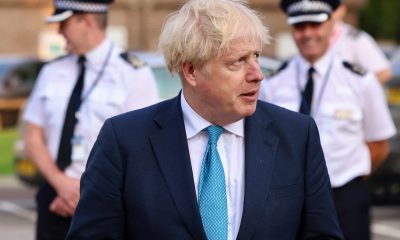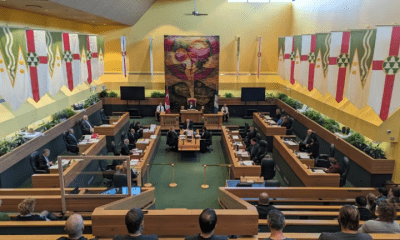Canada News
Liberal budget details $11.2B in affordable housing, plus push for private cash

Cities and affordable housing providers will find themselves with $11.2 billion more to spend on new and existing units over the coming decade, part of a multi-pronged push detailed in Wednesday’s federal budget to help people find homes. . (Photo: Ken Lund/Flickr)
OTTAWA — Cities and affordable housing providers will find themselves with $11.2 billion more to spend on new and existing units over the coming decade, part of a multi-pronged push detailed in Wednesday’s federal budget to help people find homes.
The money, which comes from the government’s social infrastructure fund, includes $5 billion to encourage housing providers to pool resources with private partners and to allow the Canada Mortgage and Housing Corp. to provide more direct loans to cities.
Overall, the fund gives the Liberals a way to bypass provinces and deliver more cash straight to local governments.
The Liberal government wants to ensure cities can access funds as quickly as possible to make necessary investments in the country’s stock of aging affordable housing, Finance Minister Bill Morneau said Wednesday before tabling the budget.
Jeff Morrison, executive director of the Canadian Housing and Renewal Association, summed up the Liberal spending plan: “The government is back in the social housing business.”
Still, the funding falls short of the $12.6 billion the mayors of Canada’s biggest cities requested last year. Further, the majority of the $11.2 billion isn’t slated to be spent until after 2022.
The money, coupled with $2.1 billion for homelessness initiatives over the next 11 years and a $4-billion pot to help housing providers with expiring funding agreements, sets the financial backbone for a coming national housing strategy.
The document will outline how the government plans to help people find affordable housing that meets their needs, ensure a robust emergency shelter and transitional housing system for those who need it, and help providers become financially self-sufficient.
“The national housing strategy is a once-in-a-generation opportunity for change,” said Mark Rodgers, president and CEO of Habitat for Humanity Canada. “To be effective, we must invest in all parts of the housing continuum, including affordable home ownership.”
Wednesday’s budget, which outlines how the government plans to spend the $81 billion it is making available between now and 2028 to address future infrastructure needs and, the government hopes, boost the economy to create new jobs and government revenues.
What’s needed now is finalized funding agreements with provinces that will set funding and spending rules.
The budget also gives $39.9 million over five years for Statistics Canada to create a national database of every property in Canada, including up-to-date information on sales, the degree of foreign ownership and homeowner demographics and finances to answer questions about the skyrocketing cost of housing.
“The federal government stepped up with some bricks-and-mortar money and some programming money,” said Edmonton Mayor Don Iveson, head of the Federation of Canadian Municipalities big city mayors’ caucus.
“Our only concern is it’s a bit back loaded right now, but we’ll work with the federal government to see if the investments can be accelerated to realize the goods sooner.”
The Liberals clearly see a need to attract private investors to help pay for infrastructure projects, including affordable housing, given the federal government’s tight fiscal position.
At the centre of that push is a proposed new infrastructure bank that would use public dollars to leverage private investment in three key areas: trade corridors, green infrastructure and public transit.
The government is setting aside $15 billion in cash for the bank, split evenly between each of the aforementioned funding streams, with spending set to start as early as the next fiscal year on projects based on budget projections.
Morneau said that the government wants to have the bank up and running this year, including having some projects that will be identified for investors.
But the budget document again projects that the majority of the bank’s spending won’t happen until after 2022. And in the case of trade corridor infrastructure, spending isn’t expected to start until 2020, even though some experts argue this stream would give the country the biggest economic bump.
The Liberals are also tweaking how much of the bill it will cover for municipal projects under the second phase of its infrastructure plan in order to nudge provinces to pony up more money for work and to prod cities to consider using the bank for projects that could generate revenue, like transit systems.
The government will cover up to 40 per cent of municipal projects under the upcoming phase of its infrastructure plan, 50 per cent for provincial projects and 75 per cent for indigenous projects.





















